The diversity within the desert Southwest region shows in December. While elevation or time of day may determine one's clothing or specific tasks, garden possibilities are great anywhere here. Desert dwellers can celebrate unsettled periods of rain — with occasional snow showers in higher locales — spaced far enough apart to create warmer, gentler periods that permit being outside.
While the holidays often bring on busy activities, there's no reason these times cannot include downtime to enjoy your own surroundings. Any size garden can create a hospitable welcome and be a memorable entertainment space for guests and homeowners alike.
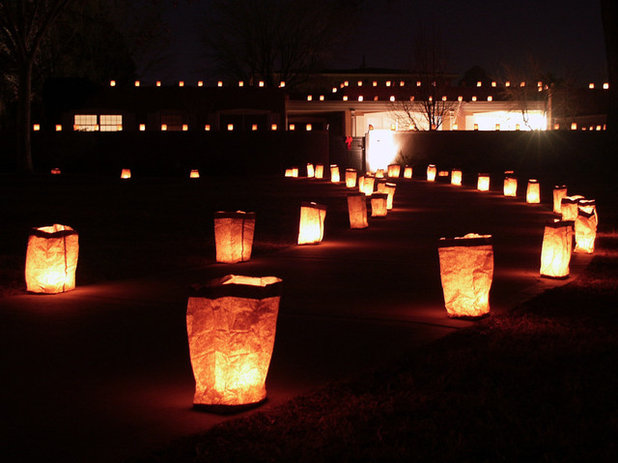 Light it up.
Light it up. Luminarias have been gaining popularity in areas outside New Mexico, to
add a touch of regional ambience to the holiday scene. Originally luminarias were temporary, with candles resting in a stabilizing layer of sand in the bottom of a brown paper bag. They are often placed out specifically for Christmas Eve. Used along a sidewalk or on a patio for a special evening get-together, they can line the way for guests to walk or accent tops of lower courtyard or seat walls.
More modern luminarias have heavy plastic bags with lights strung between them and are connected to a power outlet. They also require secure adhesion, such as exterior-grade caulk or even a glue gun. In areas prone to stronger winds, it is best to not put out such luminarias, since they rarely stay attached.
Photo courtesy of Wikimedia Commons user camerafiend
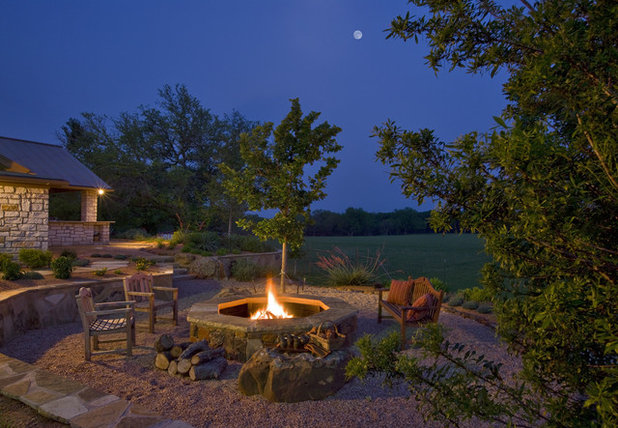
Rick O'Donnell Architect
In lower zones, fire pits are a great way to illuminate and warm an intimate space under the stars. In higher zones, they can provide warmth during the day as well.
Of course low-voltage landscape lighting can be used to great advantage. Keep it subtle and avoid adding unnecessary light pollution, which would affect the views of the night sky for you and your neighbors.

The Plant Man Nursery
Garden tasks by region. Low zone: It’s the time when many can start harvesting citrus, including
grapefruit. Appearances are sometimes deceiving, so taste test a few fruits from different parts of each tree.
Living Christmas tree choices include
Afghan pine (Pinus eldarica),
aleppo pine (Pinus halepensis) and
Italian stone pine (Pinus pinea).
This is an ideal month to install new ornamental plants as well as cool-season edibles, such as lettuce, onions and peas.
Medium zone: Some citrus is becoming ready to harvest, but it’s a great idea to taste the fruit before spending much time picking it. Some citrus, such as grapefruit, is often not ripe until next month.
Living Christmas tree choices are similar to those in the low zone, plus
Arizona cypress (
Cupressus arizonica and
Carya glabra). Hardier plants, including those native to your area (except most palms), continue to be safe for planting this month, including Parry’s agave
(Agave parryi), shown.
High zone: Living Christmas tree choices are similar to those in the medium zone, though Aleppo pine can be tender to colder winters in colder portions of the high zone, so find out how reliable that species of pine is in your area long term before planting. Of course hardier plants, except some cacti or broadleaf evergreens, such as live oaks and India Hawthorn, are safe to plant right now.
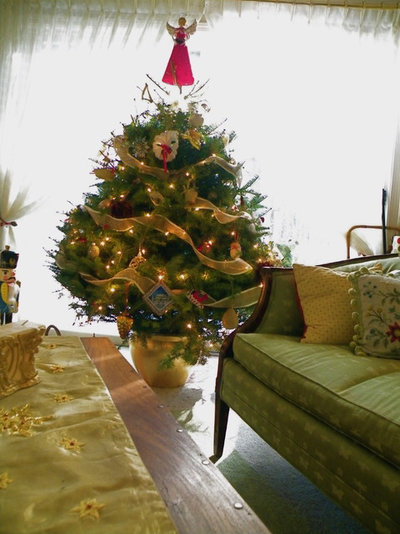
Linda Merrill
Living Christmas trees. While decorating with a living Christmas tree is an ecologically centered choice, all species require being used in rooms kept cooler than for cut trees.
It's also important that they be selected for the scale of their final planting space. There's nothing as disappointing as a tree that overgrows its space and loses its form to better conform. All species listed with the previous photo quickly grow to sizes that will overpower most typical or smaller properties, so consider if a living Christmas tree is practical before purchasing one.
Finally, live trees need to be planted outside and cared for ideally within a few days following Christmas.
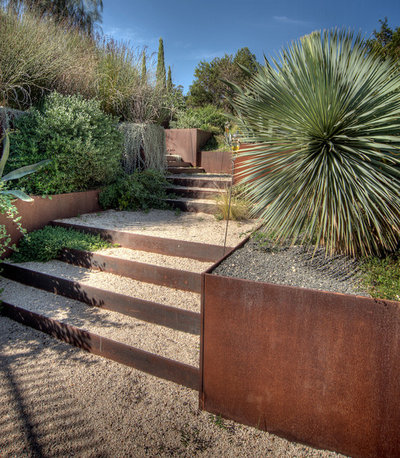
D-CRAIN Design and Construction
First resort. Winter visitors are arriving in lower elevation communities and passing through the higher places; traffic alone shows this. So, how do you make your own garden feel more like
a favorite resort?
Create potted plantings that impress during the cold season. Hardier accent plants, such as
yucca, Hesperaloe,
Nolina and some
cacti can take planting in larger containers if kept on the drier side.
One can underplant the above using hardy winter annuals, such as
dianthus, pansies, kale or
petunias. Or add color with year-round foliage to contrast containers. In colder locales be prepared to cover plants during harder freezes.
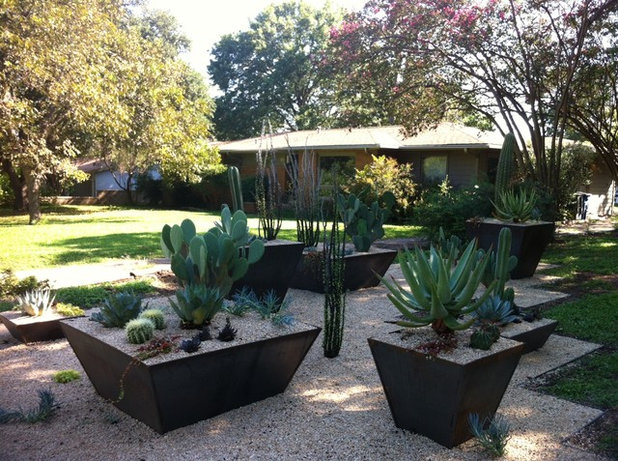
D-CRAIN Design and Construction
Another trick of the trade is to use matching containers and plants in one area, to draw attention and create a sense of elegance or even formality.
Groupings or masses of the same species of evergreen plants in containers or in the ground further add a sense of vitality in the otherwise drab wintertime.
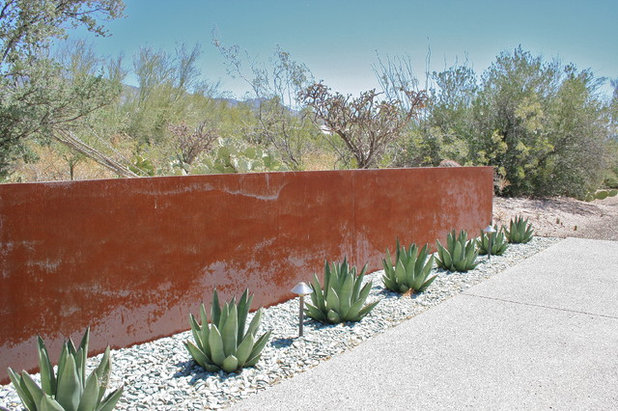
Prideaux Design
Where's the water? Unless your area is receiving regular precipitation, monitor plant root zones for whether the soil is drying out. While winter is cooler, the humidity is often lower, and windy periods
with sunshine can serve to dry out soil beyond what's ideal for healthier plants.
The reverse can also be true. During wetter winters, be careful not to add to any potential problems with too much soil moisture, which can lead to rotting. Accent plants such as cacti and agaves are especially sensitive to overwatering.
Either extreme of watering — too little or too much — creates a plant that is unnecessarily stressed and susceptible to premature death, therefore adding to the cost of your garden.





